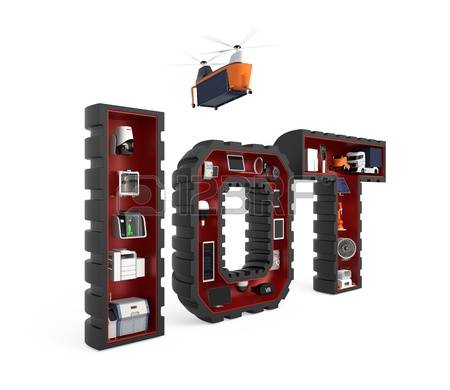by Hiep Pham
When it comes to assessing progress of a new technology, generalities are common. We know that market growth is occurring, but but not the rate at which it’s growing. Therefore, much of the Industrial Internet-of-Things (IIoT) arena is reduced to stating the obvious: IIoT is growing, its supporting products are getting more sophisticated, and users are reaping the benefits.
That message is pretty clear today. But how do we put into perspective IIoT’s growth and opportunities for its players? How do we measure product sophistication and user benefits, particularly in the crucial area of IIoT storage? How do we exit the “generalities zone” and objectively measure and understand the data in front of us? Sadly, there has not been much data to fill in the holes – until now.
Let’s start with market growth. Researchers have devoted resources to quantify the IIoT space. Market research firm IDC, cites IoT spending growing at an average annual rate of 15.6 percent a year, reaching $1.29 trillion by 2020. Accenture estimates that manufacturing companies worldwide will spend $500 billion a year by 2020 on IIoT technology alone, and foresees IIoT adding $14.2 trillion to the global economy by 2030. But unlike consumer and enterprise IoT, in which metrics are simplified to data-throughput rates and the dollars spent to achieve them, industrial IoT is a different animal.
What rule the day in IIoT are key attributes such as equipment durability, data protection, and the ability to operate in harsh environments. If you want to draw a distinction between off-the-shelf solid-state storage and SSDs for IIoT, consider the drives’ rated longevity in terms of terabytes written endurance.
A telling measurement of data protection on such drives is in the level of encryption they’re capable of. Self-encrypting drives using the Advanced Encryption Standard (AES)– regarded as the de facto security standard for the U.S. government, provide asolid assurance that data at rest is protected. The 256-bit key size of AES256, for example, provides an astounding 1.1 x 1077 number of possible combinations.
As for those harsh environments, a truly unambiguous metric is that of industrial temperature, or iTemp, which means the drives are rated to operate soundly in extreme cold or heat, between -40°C and 85°C.
Ths distinction applies to SSD software too. Stop for a minute and envision an unmanned offshore oil rig using IIoT equipment charged with collecting, storing, securing, transferring, and receiving crucial data for the operation. In addition to needing rock-solid SSDs and other hardware, the whole system must be monitored from afar, which is where remote-monitoring software comes in. It’s difficult to imagine any professional in the energy field who’d be comfortable with not having absolute confidence in the integrity of that rig’s IIoT system and the ability to keep track of it from afar.
And there are several additional storage considerations when designing and building an IIoT ecosystem:
Small-footprint designs: Compact form factors – M.2, mSATA, and Slim SATA — help reduce space, energy consumption, and cooling requirements.
Industrial-grade durability: As mentioned, extreme temperatures can be mitigated through industrial temperature-rated equipment, but attention has to be given also to mitigating the effects of shock, vibration and, in some applications, even altitude.
Legacy-systems integration: IIoT-focused hardware and software need to take advantage of existing infrastructures. By easily integrating with legacy systems, businesses can leverage the benefits from IIoT without the cost expenditure to retrofit larger, more-expensive sub-systems.
Energy consumption: Due to numerous connected devices, IIoT applications may also require low-power technologies to keep overall functionality and communications efficient — and energy costs low.
Remote monitoring: The availability of remote monitoring software, such as vtView, is central to assuring performance and reliability of IIoT storage. In addition, the tool can provide data analysis features at the edge.
Intelligent, secure storage: This is where we are focusing our future development. As the need to store more and more data grows exponentially, edge storage in IIoT environments needs to get smarter so it can offload central servers by filtering crucial data or knowing when to buffer data to the central server to improve overall efficiency.
Additionally, intelligent storage will need to integrate and leverage the growing array of network protocols, such as Ethernet, WWAN, WLAN, WPAN, 3G/4G cellular, and satellite communications.
Encryption is a must. Hardware-based encryption, found in Virtium’s current and future offerings, provides an additional layer of security because as the encryption key never leaves the drive.
The above represents the concerns we at Virtium share with engineers and manufacturers building the next generation of IIoT systems. They’re not caught up in “speeds and feeds” as their counterparts are in the enterprise and consumer markets. They want assurance that their systems will work well and do so for a long time. Equally important is that the data they need for successful designs remains secure and accessible. The surest way for them to gain those assurances is through verifiable metrics that give a clear picture of the market’s direction, along with the integrity of the hardware and software they select.
Hiep Pham is vice president of research and development at Virtium Solid State Storage and Memory.




